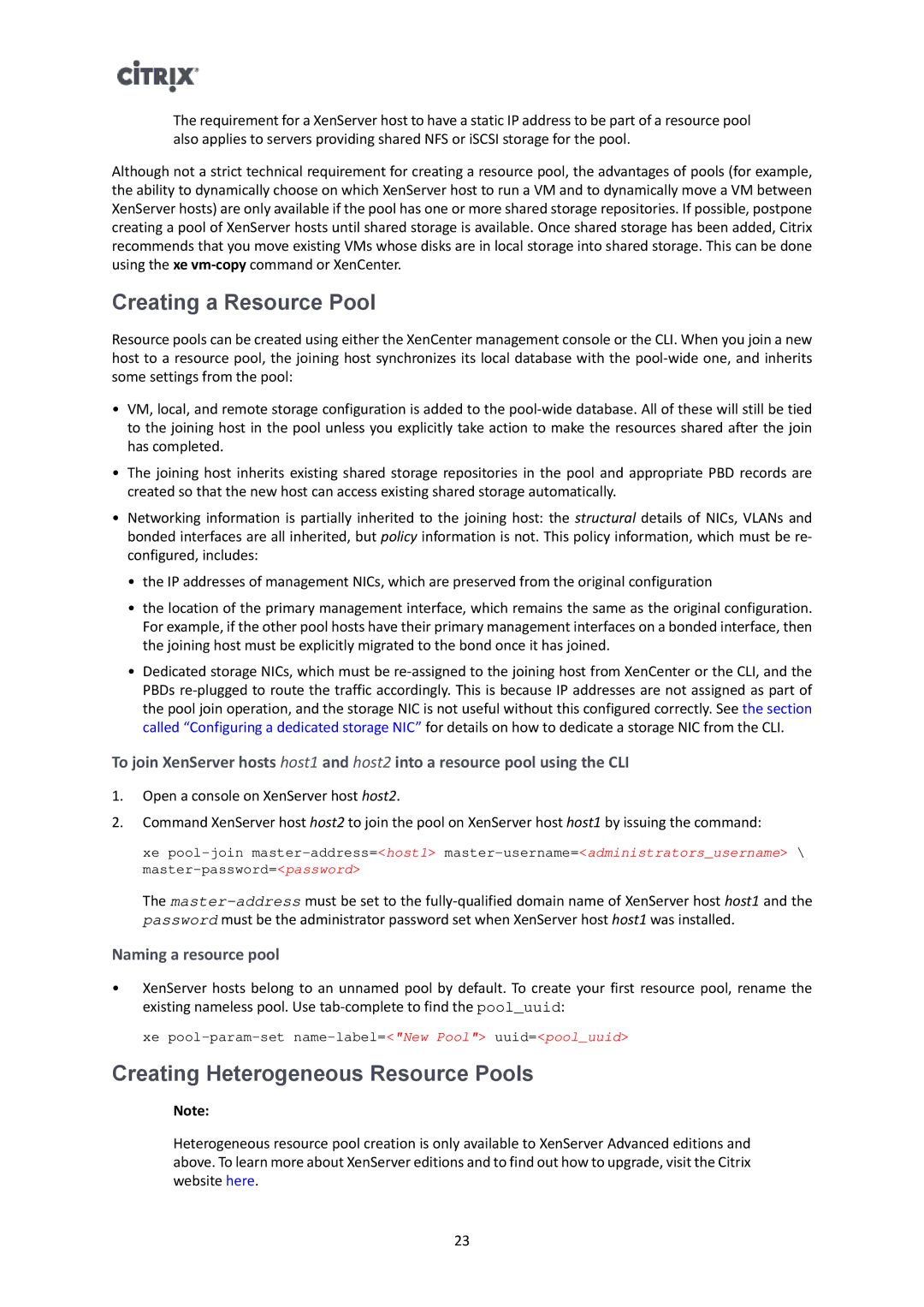The requirement for a XenServer host to have a static IP address to be part of a resource pool also applies to servers providing shared NFS or iSCSI storage for the pool.
Although not a strict technical requirement for creating a resource pool, the advantages of pools (for example, the ability to dynamically choose on which XenServer host to run a VM and to dynamically move a VM between XenServer hosts) are only available if the pool has one or more shared storage repositories. If possible, postpone creating a pool of XenServer hosts until shared storage is available. Once shared storage has been added, Citrix recommends that you move existing VMs whose disks are in local storage into shared storage. This can be done using the xe
Creating a Resource Pool
Resource pools can be created using either the XenCenter management console or the CLI. When you join a new host to a resource pool, the joining host synchronizes its local database with the
•VM, local, and remote storage configuration is added to the
•The joining host inherits existing shared storage repositories in the pool and appropriate PBD records are created so that the new host can access existing shared storage automatically.
•Networking information is partially inherited to the joining host: the structural details of NICs, VLANs and bonded interfaces are all inherited, but policy information is not. This policy information, which must be re- configured, includes:
•the IP addresses of management NICs, which are preserved from the original configuration
•the location of the primary management interface, which remains the same as the original configuration. For example, if the other pool hosts have their primary management interfaces on a bonded interface, then the joining host must be explicitly migrated to the bond once it has joined.
•Dedicated storage NICs, which must be
To join XenServer hosts host1 and host2 into a resource pool using the CLI
1.Open a console on XenServer host host2.
2.Command XenServer host host2 to join the pool on XenServer host host1 by issuing the command:
xe
The
Naming a resource pool
•XenServer hosts belong to an unnamed pool by default. To create your first resource pool, rename the existing nameless pool. Use
xe
Creating Heterogeneous Resource Pools
Note:
Heterogeneous resource pool creation is only available to XenServer Advanced editions and above. To learn more about XenServer editions and to find out how to upgrade, visit the Citrix website here.
23
